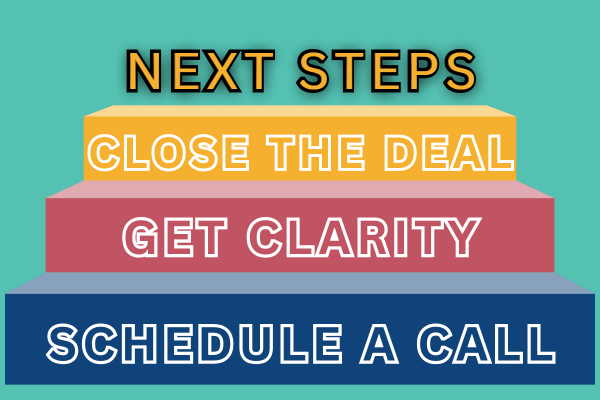If you’re a founder doing your own selling, you’ve probably faced this dilemma: “How often should I follow up with leads before I’m just annoying?”
You’re not alone. If you follow up too frequently, you risk killing the deal before you have a chance to determine its potential. If you don’t follow up enough, they’ll most likely forget you exist, thus also killing the deal.
You’ve probably heard the phrase “sales are made in the follow-up” or something like that. Honestly, I don’t love that mentality because, although follow-up is essential, it’s not a crutch.
Most founders (and full-time salespeople) either give up too soon or follow up inconsistently because they don’t want to feel like a pest. Others overdo it because that’s how they learned to sell, or they are desperate for the sale.
The truth is that knowing how to follow up with leads is one of the simplest ways to improve your close rate, without changing your product, price, or pitch. As long as you do it the right way, that is.
Rule #1: Follow-Up Should Help, Not Harass
No one wants to be chased, but everyone appreciates helpful reminders and valuable insights.
Think about the prospect’s experience. Are you sending repetitive “just checking in” emails, or are you providing information that helps them make a decision?
Even more importantly, are you asking for a decision or response at all?
So much cold outreach is just a spray-and-pray approach for what a company does, ending with something along the lines of “Can I send you _______?” Your hard-earned leads will ignore the vast majority of those emails.
Whereas, if you send an email that provides value and asks a question, such as “Has this been a struggle for your sales team?” the follow-up can happen more naturally.
Sure, if they aren’t struggling with it, they still may ignore the email. However, by providing some insight, statistics, or other pertinent information to their business, you’ve already established a warmer relationship, should they need help later. (Other tactics help here too, including good formatting so you don’t end up in spam and true personalization beyond just a “Hi [first name]!” introduction.)
Bottom line: If you don’t know what your prospects need or who your product helps, sending cold emails and follow-ups is a waste of your time. Even if you have done the research, make sure you’re focusing on the prospect’s needs, not your own.
Do the research, provide value, ask a question, and then follow up with leads organically. And change those ‘I’s’ to ‘you’s’!

Rule #1 Tips:
A helpful follow-up:
- Adds something useful (an idea, a resource, a relevant case study)
- Respects their time and decision-making process by asking if your solution is relevant to them
- Helps the prospect clarify their next step
A harassing follow-up:
- Repeats the same message with increasing frequency, despite a lack of response
- Guilt-trips the prospect for not responding
- Focuses entirely on your need to close the deal
Example of a helpful follow-up email, after a positive response:
“Hi [Name], I completely understand how frustrating that can be. As described in my previous email, you’re not alone. Fortunately, we might be able to help. Let’s talk about what you’re dealing with to find out if we have the right solution for you later this week. I’m free on Friday; does 1 work for you?”
Example of a helpful follow-up email, after no response:
“Hey [Name] again, I don’t want to take up your time if this isn’t relevant to you right now. However, in case you’re struggling with the same issues that our clients have had, I wanted to send you a (short!) case study. It quickly highlights how our product solved their problems and improved their business. After looking it over, if you’d like to discuss this further, send me a quick reply and we’ll set up a meeting. If not, no worries at all. Just reply ‘No’ and I’ll get out of your inbox.”
Rule #2: Be Consistent When You Follow Up with Leads
The biggest follow-up mistake founders make is inconsistency. You have a great call, life gets busy, and suddenly it’s been two weeks. Now your follow-up feels awkward—or worse, forgotten.
Or, you panic and send four messages in a week trying to “revive” a deal that’s gone cold.
Consistency beats intensity every time.
Avoid these issues by scheduling next steps and follow-up responses in your CRM, ensuring that nothing falls through the cracks.
Rule #2 Tips:
A simple follow-up rhythm to follow:
- 1st follow-up: 1-2 days after the call or cold outreach
- 2nd follow-up: 4-5 days later, adding new value or asking a clarifying question
- 3rd follow-up: 7-10 days later, reinforcing the value of solving the problem while offering a ‘no thanks’ option
After three attempts, you can either let it rest for a few weeks or send a break-up email, giving them the option to close the loop.
Founders Tip: The follow-up habits you build now will make it much easier to train your future sales team. If you can’t keep up with your pipeline, neither will they.

Rule #3: The Follow-Up Should Lead Somewhere
The goal of following up isn’t just to get a reply; it’s to guide the next step in your sales process.
Too many founders send follow-up emails that say, “Just checking in…” without providing the prospect with a reason to respond or a clear next step.
Every follow-up should point to one of three outcomes:
- A conversation (a call, a demo, a decision-making meeting)
- A decision (move forward, defer, or close the loop)
- A clarification (uncovering what’s blocking progress)
Be sure to avoid vagueness and always strive to reach mutual agreements led by you. If you put the next steps in their hands, you’re risking them getting busy and forgetting about you.
The ‘next steps’ rule is crucial for every step in your sales process, from the initial outreach to signing the contract. Always let them know precisely what the next steps are and when they can expect them to happen. That way, you aren’t chasing them like a lost puppy, trying to remind them who you are and how you can help.
Rule #3 Tips
Great ‘next steps’ follow-up responses:
- Over the phone — “It sounds like you’ve been dealing with this for a while. Does it make sense to talk more to see if I can help with this? (After a positive response) Great, let’s schedule an hour-long chat for next Wednesday at 2 pm. Does that work for you?”
- Over email, after a positive response — “I’m sure your inbox is as full as mine, so I’d like to continue discussing this with you face-to-face to see if I can help. If you’re free next week, let’s meet over Zoom on Thursday at 3:00 your time.”
- No response or unclear response — (After providing valuable insight) “Let me know if scheduling a call this week makes sense to clarify [specific issue], or if I should circle back in a month when it’s a better time.”
Remember, people get busy. Taking the lead on setting next steps isn’t pushy; it helps both of you get what you need from your sales conversations. You have a better chance of closing the deal, and they have a better chance of solving a problem that could be holding them back.
These responses (adapted for your business and personality, of course) provide clear next steps without removing your lead’s autonomy and decision-making power.

Rule #4: Follow Up With Leads After Their Decision
Whether they said yes to the deal or decided to go another way, consistent and meaningful follow-ups are vital.
This rule only applies to leads with whom you have an open line of communication and have had at least a full discovery call. If somebody replies “No” to a cold email or call, do not respond with anything other than “Thank you, we will remove you from our list.”
But if you’ve had warmer conversations in which a closed deal seemed like a possibility, following up after they say no can give you essential insight into how you can improve. And you’ll maintain the trust you built during the sales process so that they may think of you next time.
Following up after they say yes is equally essential, especially if there are still more steps before fulfillment, such as going over the proposal or signing the contract. Failure to lock in airtight next steps could lead them to change their mind, lose trust that you’ll follow through on promises, or find somebody a little more responsive.
Again, that window of eagerness closes quickly, so you have to ensure they’ve bought into the closing and fulfillment process after saying yes.
Rule #4 Tips:
Following up after they say ‘no’:
“I understand that you’ve decided to go in another direction. I completely respect your decision, but it seemed like we would’ve been a good fit to help you. Because I always strive to provide the right solutions for small business owners, would you mind providing some insight into why you made that decision?”
(There are a million different ways you can handle outreach after a ‘no,’ depending on how, when, and why they said it. But this example provides the foundation of a response that both respects their decision and gives them a reason as to why you want that information without shaming them for it.)
Following up after they say ‘yes’:
“I’m so excited to work with you! As promised, after our last call, this is the contract we discussed. Please review it thoroughly to ensure it aligns with our previous discussion. If you have any questions, don’t hesitate to reach out. After you sign the contract, my team will reach out to you within 24 hours to begin the onboarding process.”
(Again, there are many different scenarios here. But, as previously mentioned, all follow-up should have clear expectations and value, and provide timely information for what the next steps are.)

Why Founders Need to Know How to Follow Up With Leads Early
When you get comfortable with following up:
- You close more deals without feeling pushy.
- You avoid wasting time chasing unqualified prospects.
- You learn to spot buying signals faster.
- You create a repeatable system that you can eventually pass on to your sales team.
And perhaps most importantly, you stop tying your self-worth to the outcome of every sale. Good follow-up is about being reliable, not about forcing decisions.

Quick Summary: Follow-Up Tips for Founders
- Help, don’t hassle: Every follow-up should offer value.
- Be consistent: Set a schedule and stick to it.
- Guide to the next step: Make it easy for prospects to respond with clarity.
- Follow up after the decision: If they say yes, make sure everything continues to run smoothly. If they say no, try to find out what went wrong for future improvement.
Develop a Process for How You Follow Up With Leads Today
Learning how to follow up with leads the right way isn’t just about closing more sales; it’s about becoming a better communicator, leader, and representative for your business.
When you master follow-up as a founder, you will build a stronger pipeline and create the foundation for a sales culture that values professionalism, persistence, and service.
And that will pay dividends long after you stop selling every deal yourself.
If you want help building a follow-up system that works, or need guidance in prepping your process before making your first sales hire, let’s talk.










